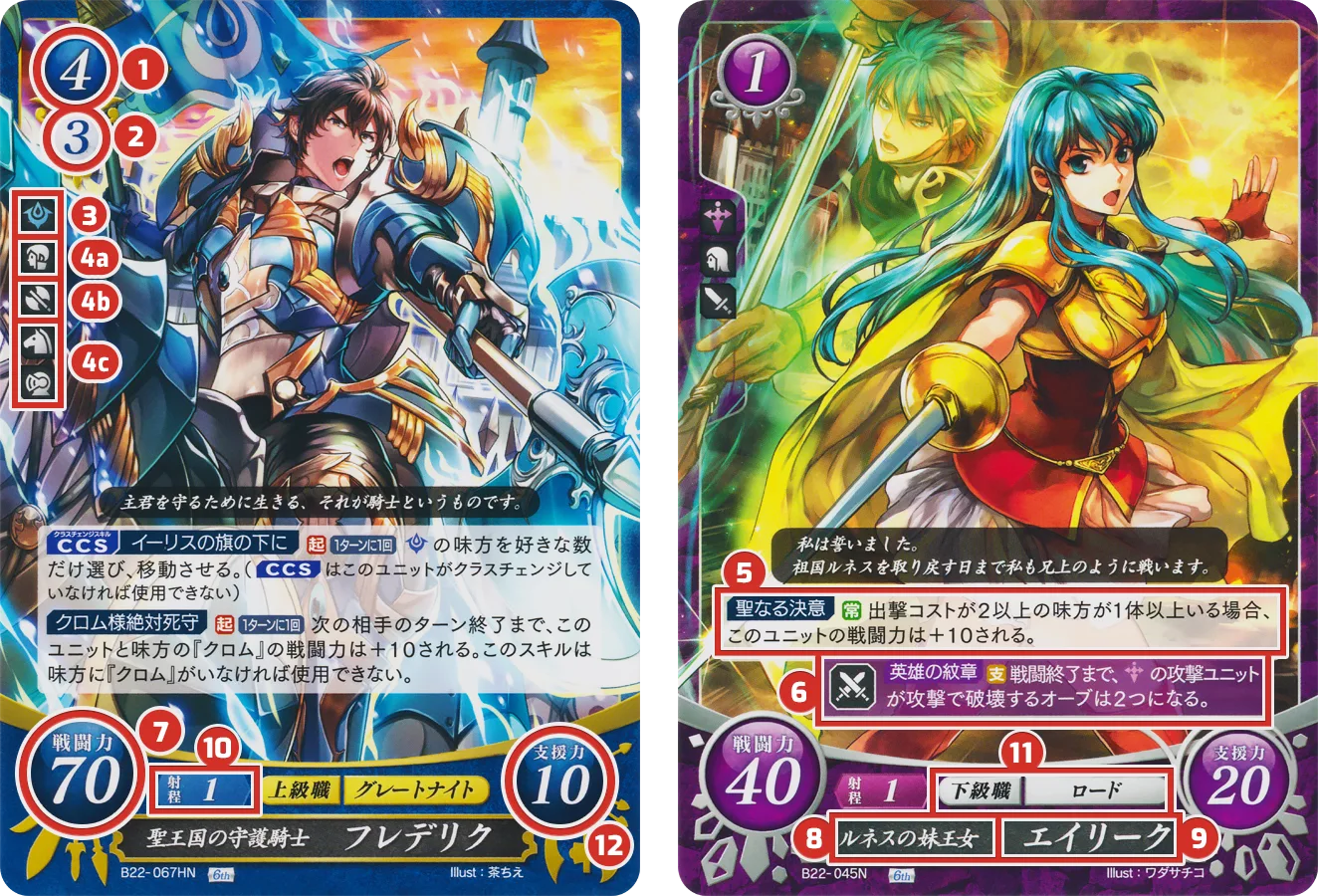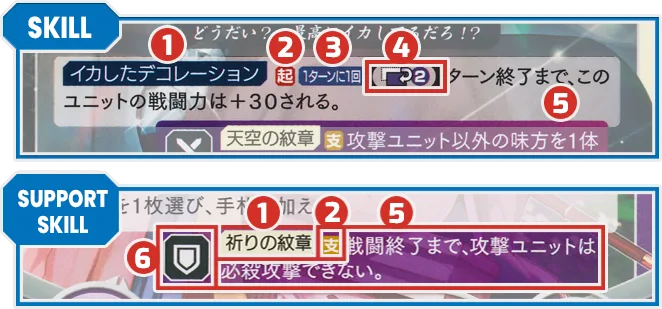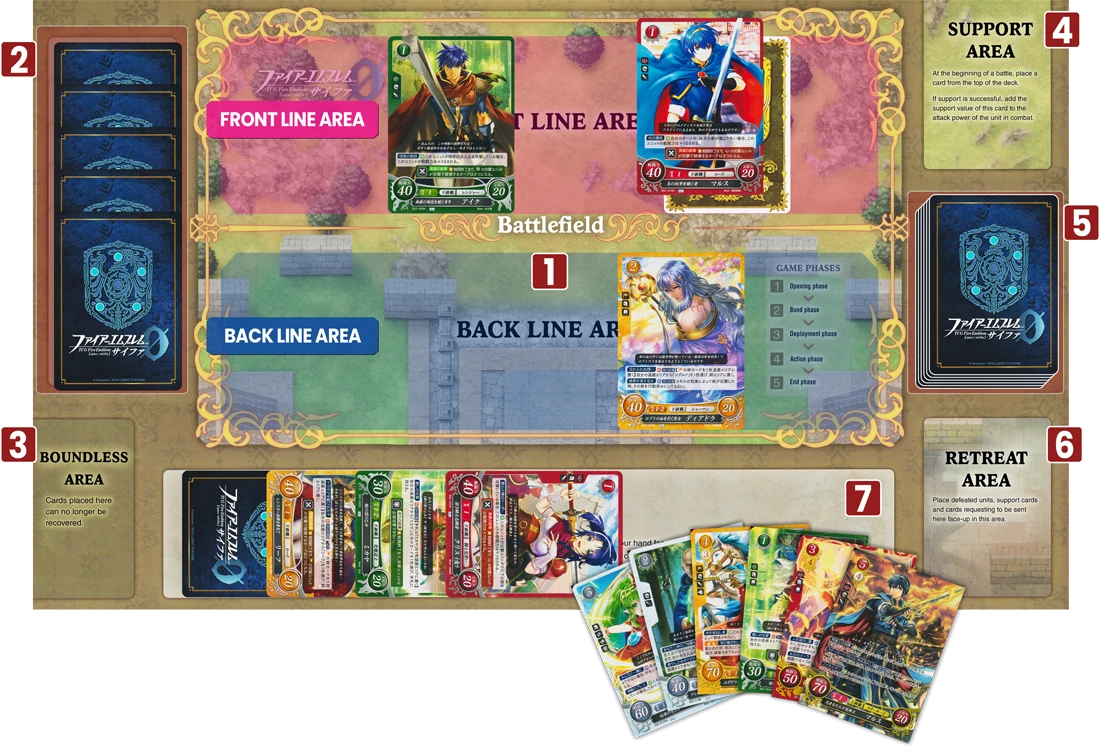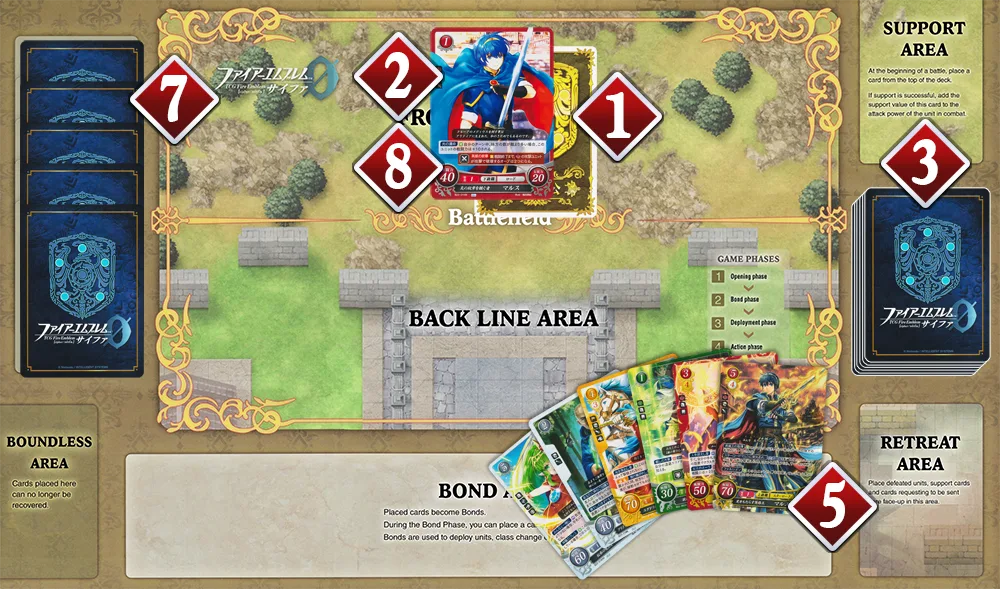Quick overview
If you're curious about Cipher, what it has to offer in terms of game mechanics, or simply want to quickly find the information you need, this page is for you, as it summarizes all the chapters.
Cards
What does a Fire Emblem Cipher card look like?

- Deployment Cost
- Class Change Cost
- Symbol / Color / Emblem
- Affinities
- Skill
- Support Skill
- Attack
- Unit Title
- Unit Name
- Range
- Class Type and Class
- Support
See “Cards” chapter.
Skills

See “Skills” chapter.
Gameplay Area
The game board looks like this:

- Battlefield
The “Battlefield” is divided into the Front Line Area and the Back Line Area. This is where units are deployed (there is no limit to the number of units deployed). - Orb Area
Orbs are represented by cards and can be compared to the life points of your Main Character. Before the start of the game, place five cards face-down in this area. - Boundless Area
Boundless cards cannot be retrieved. - Support Area
At the start of a battle, place a card from the top of the deck to support the unit in combat. Support can succeed or fail. - Deck
Place your Deck face-down in this area, and use it as a draw pile. - Retreat Area
Discard pile. This is where defeated units, support cards, cards used as costs, etc. are discarded. Place face up. - Bond Area
Cards placed in this area become Bonds and are used to deploy units, level up/class change, etc.
Deck Building
A deck is a set of cards representing your army. The Official Starter Decks give you a ready-to-play deck to familiarize yourself with Cipher's mechanics. Once you've got the hang of it, it's up to you to create your own deck and experiment, or choose from one of the following hundreds of decks shared by the Cipher Compendium community.
A deck is generally built around the Main Character, but 3 deck building rules must be followed:
- Have a deck of at least 50 cards (there is no deck limit)
- Four copies maximum for cards with the same Card Name (Unit Name + Unit Title) unless otherwise stated.
- Include one card with a Deployment Cost of 1 designated as Main Character.
Advice : Add a Hero Marker card to distinguish your Main Character; this card does not count towards the number of cards.
Setting Up
- Place the Hero Marker card on the Front Line Area.
- Choose a card with a Deployment Cost of 1 from your deck to be your “Main Character” and place it face-down on top of the Hero Marker.
- Shuffle the remaining cards and place them face-down on Deck.
- The player who wins at rock-paper-scissors/dice-roll/coin-roll is declared the first player.
- Draw 6 cards from the top of the deck and place them in your hand.
- You may change your starting hand once (also called Mulligan). If you wish to change your hand, place the 6 cards back on the deck, shuffle and draw 6 cards again.
- Place the first 5 cards of the deck face down on the Orb Area.
- Flip your Main Unit card face-up at the same time as your opponent.
Once you have finished setting up your game board, it should look like this:

Now you're ready to play. Let the battle begin!
How a game turn unfolds
A game turn consists of five phases, which must be played in the following order:
- Beginning Phase
Start of a player's turn. - Bond Phase
Optional placement of a card in the Bond Area. - Deployment Phase
Optional deployment of units on the Battlefield, unit level up/class changes. - Action Phase
Phase that includes battle, unit movement and skill activation. - End Phase
The end of the turn marks the beginning of the opponent's turn.
Victory conditions
Defeat your opponent's Main Character!
The Main Character has five orbs which can be compared to life points. When you defeat your opponent's Main Character, it loses one of its orbs. If you succeed in defeating your opponent's MC when he has no orbs left, you are declared the winner.
The five orbs are a reference to the Fire Emblem, Archanea's legendary shield.